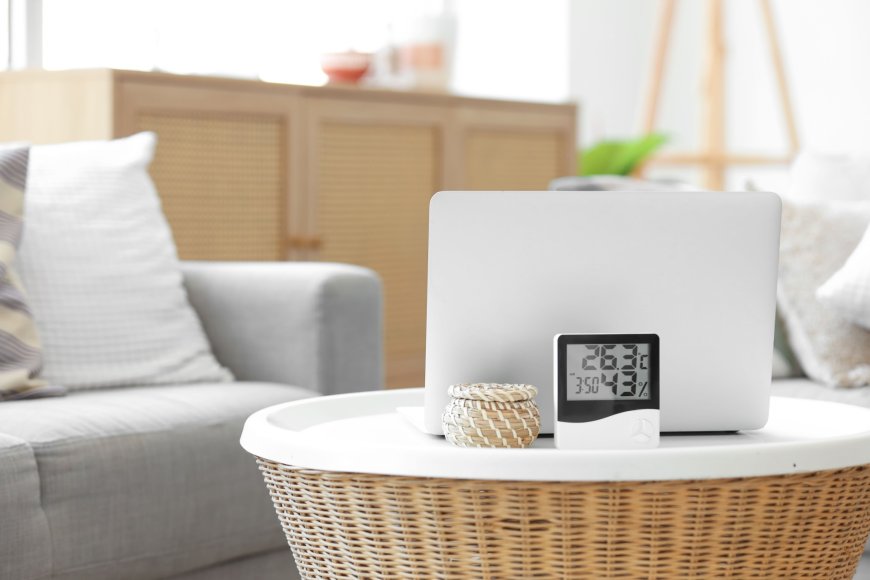How to Find the Perfect Humidity for Your Home

Did you know that over half of homes in the U.S. experience unhealthy humidity levels at some point during the year? Whether the air is too dry or too damp, it can affect your health, comfort, and even damage your home. Thats why knowing how to measure, adjust, and maintain the right humidity level indoors is crucial to creating a comfortable and healthy environment throughout the year.
This guide breaks down everything you need to know about controlling indoor humidity to keep your home just right.
What is Humidity?
Humidity is the amount of water vapor present in the air. When the air is either too dry or too moist, it can cause discomfort, health issues, and even damage to your home and belongings.
There are two types of humidity you should know about:
-
Relative Humidity (RH): This is the key measure for indoor comfort, showing how much moisture is in the air compared to how much it could hold. Its typically represented as a percentage.
-
Absolute Humidity: This is the total water vapor in the air, but its not usually what you monitor when adjusting comfort indoors.
For home comfort, relative humidity (RH) is what matters most.
Why Is the Right Indoor Humidity So Important?
Having the right humidity level indoors helps in several ways:
-
Health: Low humidity can cause dry skin, eyes, and throat, while high humidity can lead to mold, mildew, and dust mites, which worsen allergies.
-
Comfort: Balanced humidity makes you feel warmer in winter and cooler in summer.
-
Home Protection: Excess moisture can damage furniture, paint, and wood, while too little moisture can cause cracks in wood and increase static electricity.
-
Energy Efficiency: Proper humidity makes heating and cooling systems work more efficiently, helping you save on energy bills.
What Is the Ideal Indoor Humidity Level?
Experts recommend keeping the indoor humidity between 30% and 50%.
-
In winter: Target 30% to 40% because cold air holds less moisture.
-
In summer: Aim for 40% to 50%, since warm air holds more moisture.
When humidity goes above 60%, it can promote mold and mildew growth. Below 30%, you might notice dryness in your skin and respiratory discomfort.
How to Measure Humidity in Your Home
To control your home's humidity, start by measuring it:
-
Use a Hygrometer
A hygrometer is a simple, inexpensive device that measures relative humidity. You can find one online or at most hardware stores. Some smart thermostats even display humidity levels.Place the hygrometer in different areas of your homeespecially in rooms like the basement, kitchen, or bathrooms where moisture levels vary.
-
Look for Signs
Even without a hygrometer, you can spot the signs of improper humidity levels:Signs of High Humidity:
-
Condensation on windows
-
Musty or moldy smells
-
Visible mold or mildew on walls and ceilings
-
Damp or sticky air
-
Moisture on pipes
Signs of Low Humidity:
-
Dry or itchy skin
-
Sore throat or frequent nosebleeds
-
Cracks in wooden furniture or flooring
-
Static electricity buildup
-
If you notice any of these, its time to make adjustments.
How to Lower Humidity Levels
If your homes humidity is too high, here are some effective ways to bring it down:
-
Use a Dehumidifier
A dehumidifier removes moisture from the air. Choose a portable one for smaller spaces or a whole-house dehumidifier if you need more extensive control. -
Improve Ventilation
Good airflow helps regulate moisture:-
Turn on exhaust fans in the kitchen and bathroom
-
Open windows when possible
-
Use ceiling fans to circulate air
-
-
Fix Leaks
Leaking pipes, roofs, or windows can introduce unwanted moisture. Check for leaks and seal any openings to prevent excess humidity. -
Limit Houseplants
While plants can be great for your home, they also release moisture into the air. Consider moving some plants outside or into lower-humidity rooms if youre dealing with excess moisture.
How to Increase Humidity Levels
If the air in your home is too dry, particularly in the winter, heres how to add moisture:
-
Use a Humidifier
A humidifier releases moisture into the air. Options include:-
Portable units for individual rooms
-
Whole-house humidifiers that work with your HVAC system
-
-
Add Indoor Plants
Some plants, such as peace lilies and spider plants, naturally release moisture into the air. Just be mindful not to overcrowd your space with too many plants. -
Boil Water or Use Steam
Boiling water on the stove or taking a hot shower with the door open will release steam into the air and help raise humidity levels. -
Place Bowls of Water Near Heat Sources
Placing bowls of water next to radiators or heat vents will allow the water to evaporate and add moisture to the air.
Smart Tips for Maintaining the Right Humidity Level
-
Invest in a Smart Thermostat: Many smart thermostats track both temperature and humidity, letting you adjust your homes climate automatically.
-
Regularly Change HVAC Filters: Clean filters allow your HVAC system to run more efficiently, helping to regulate humidity.
-
Monitor Seasonal Changes: The seasons impact indoor air. Be prepared to adjust your humidifier or dehumidifier accordingly.
-
Seal Gaps in Windows and Doors: Properly sealed windows and doors help prevent outdoor air from affecting your indoor humidity.
When to Call a Professional
If youre still struggling to control your homes humidity levels despite your best efforts, it might be time to consult an HVAC professional. They can evaluate your system and recommend solutions, such as a whole-home humidifier or dehumidifier.
Final Thoughts
Maintaining the right humidity level is key to a healthier, more comfortable home. With the right tools, like a hygrometer, and a few simple strategies, you can manage your homes humidity year-round. Aim to keep your humidity between 30% and 50%, and youll create an environment thats both comfortable and healthy.
Need professional help with your homes humidity? Reach out to us at GNV Heating and Air Conditioning!





































